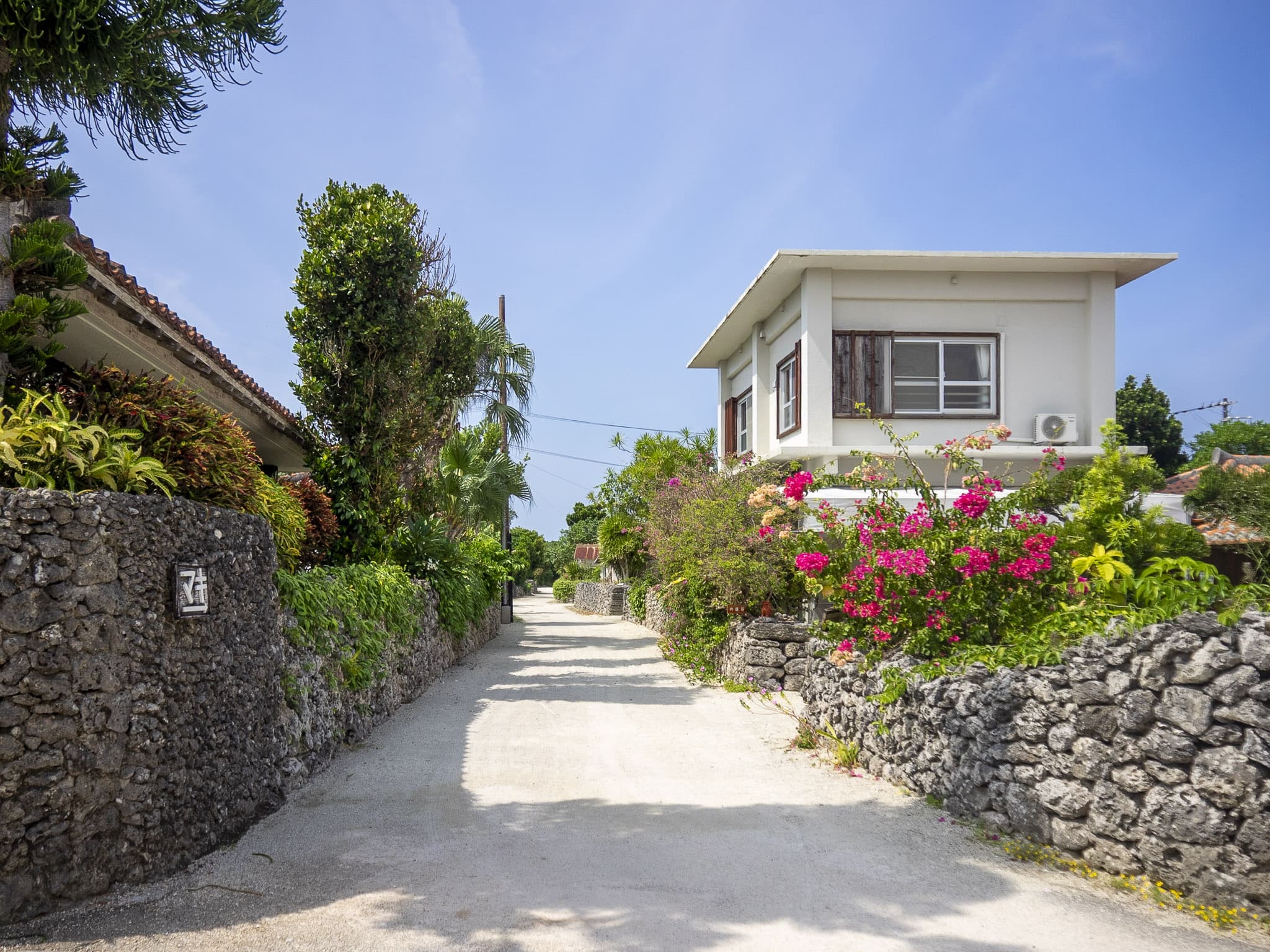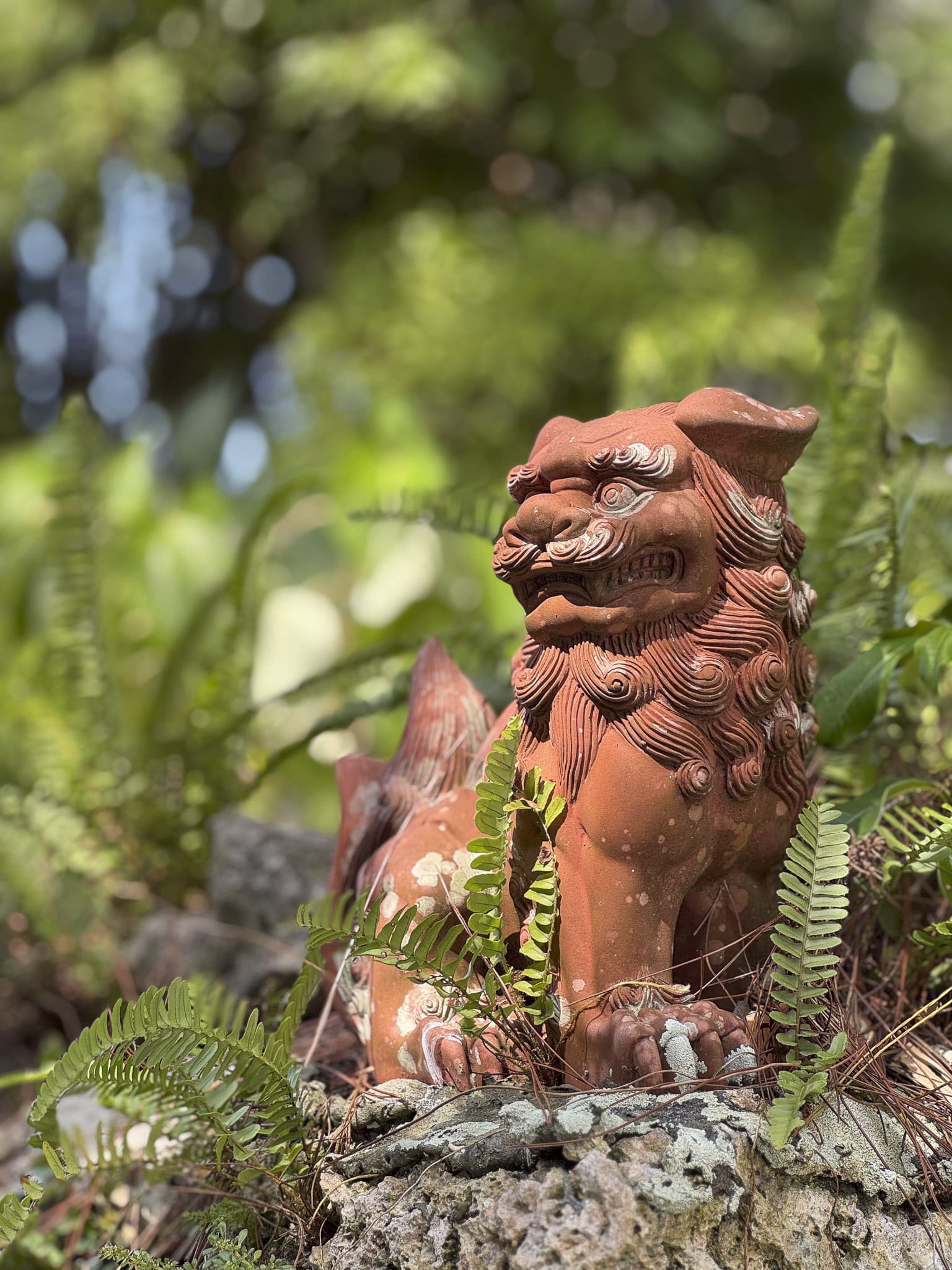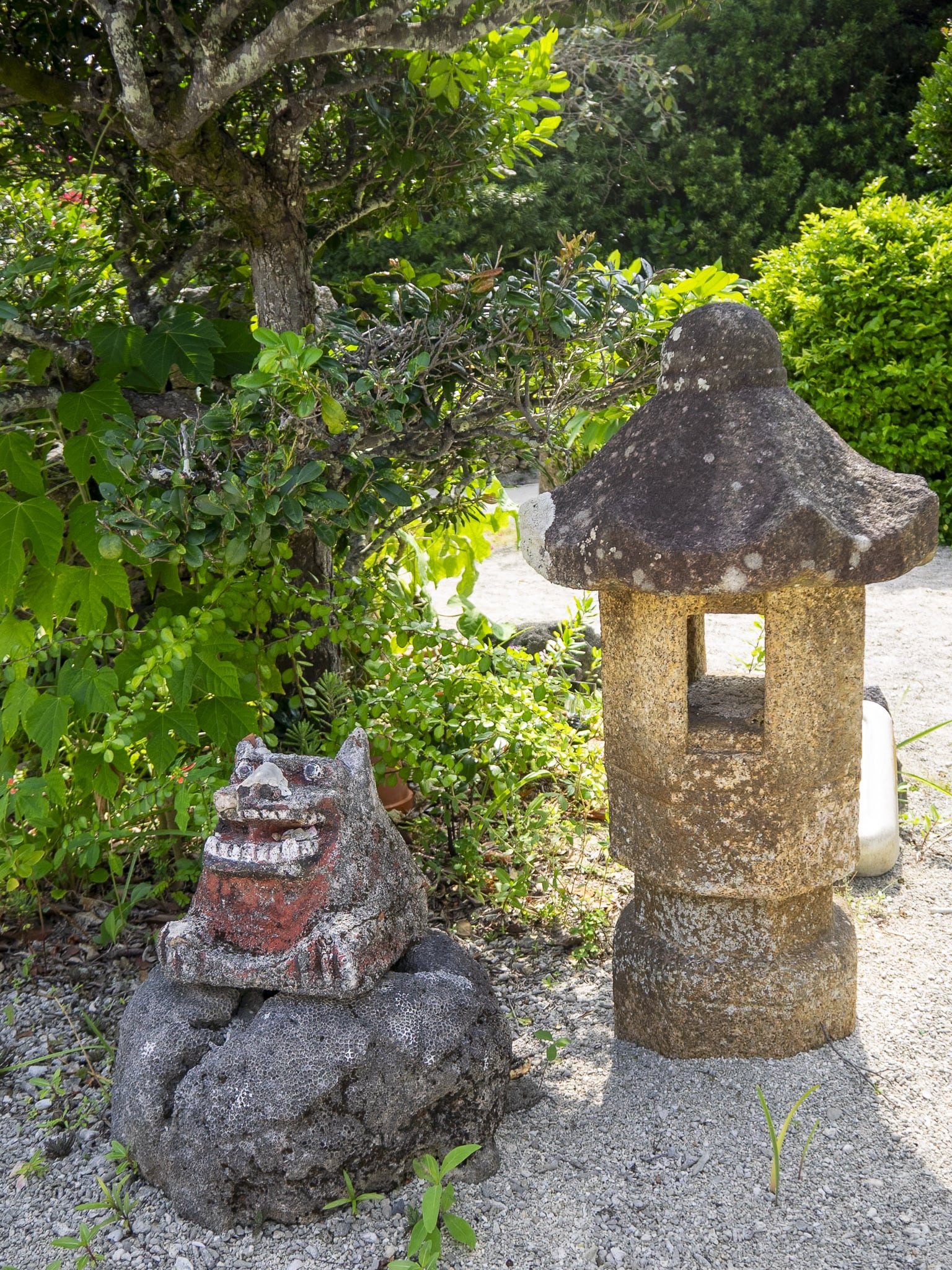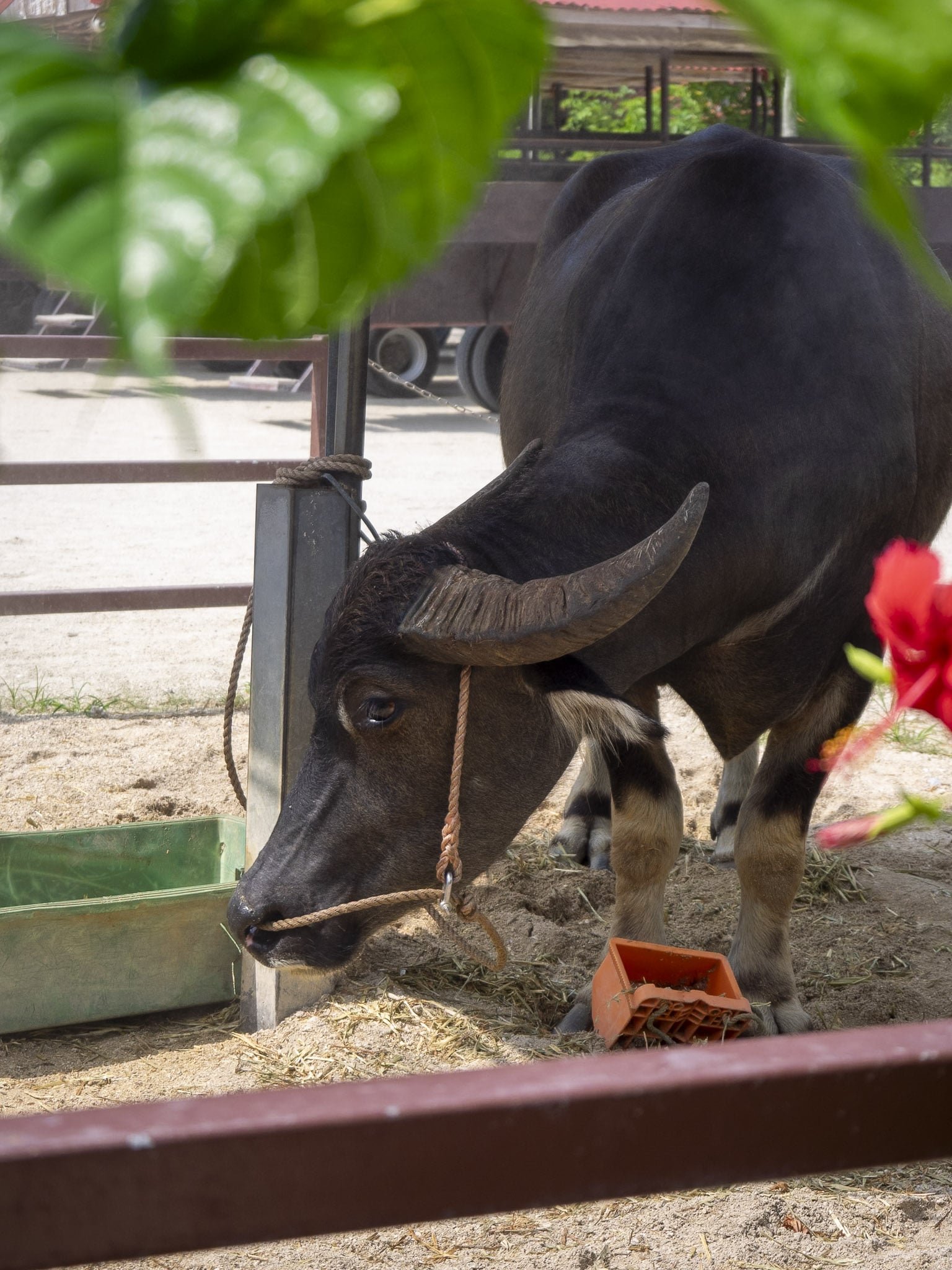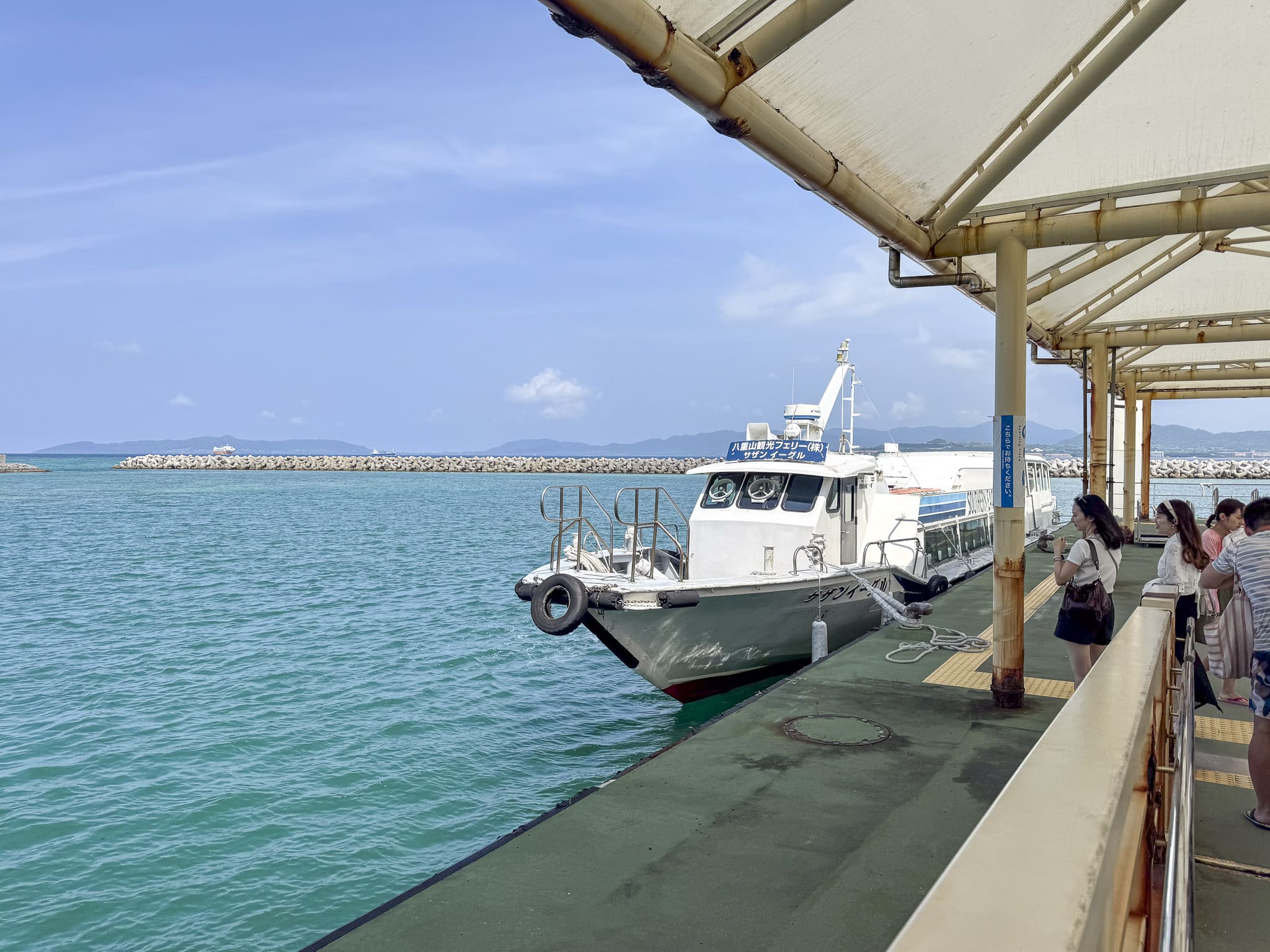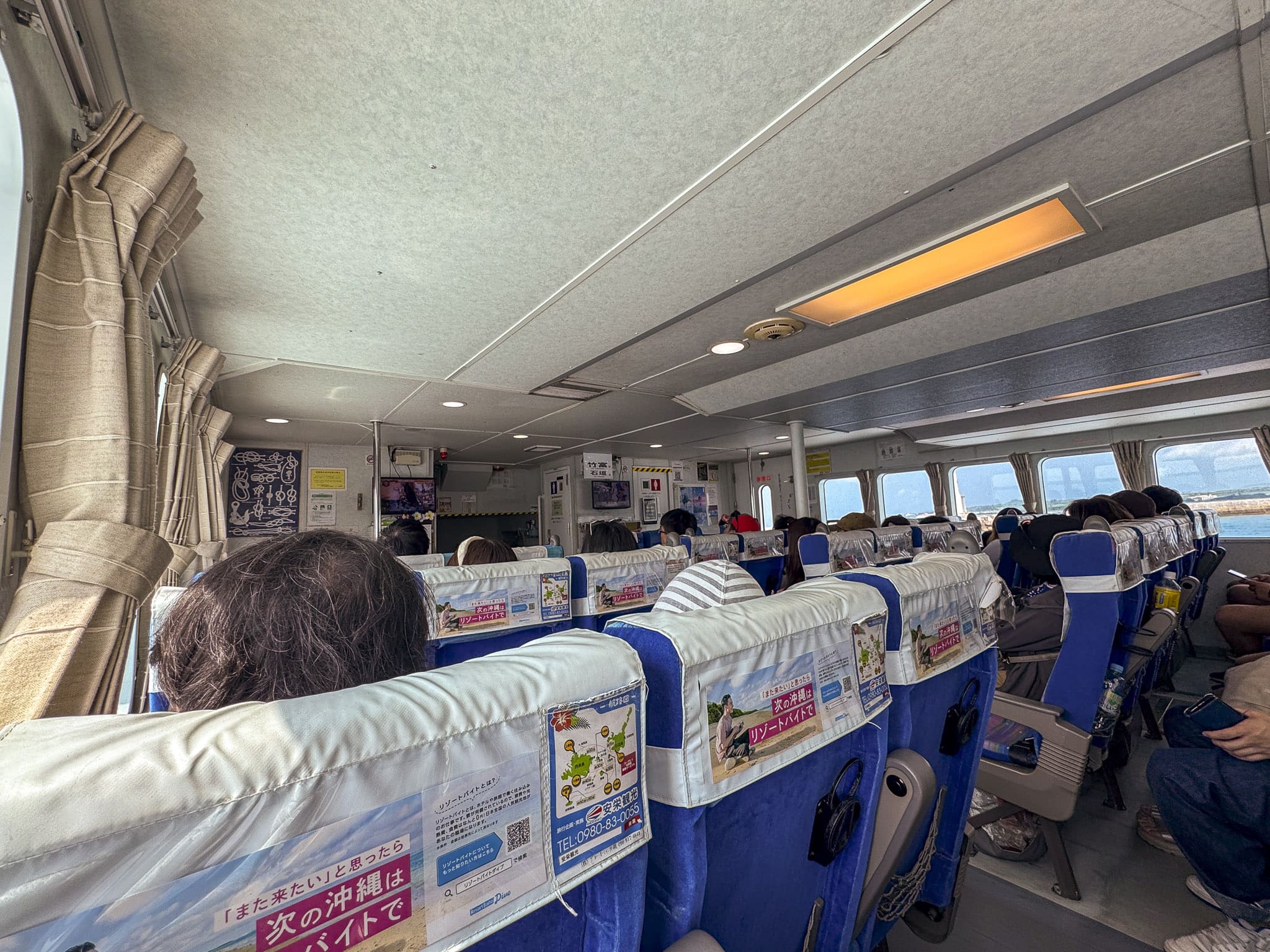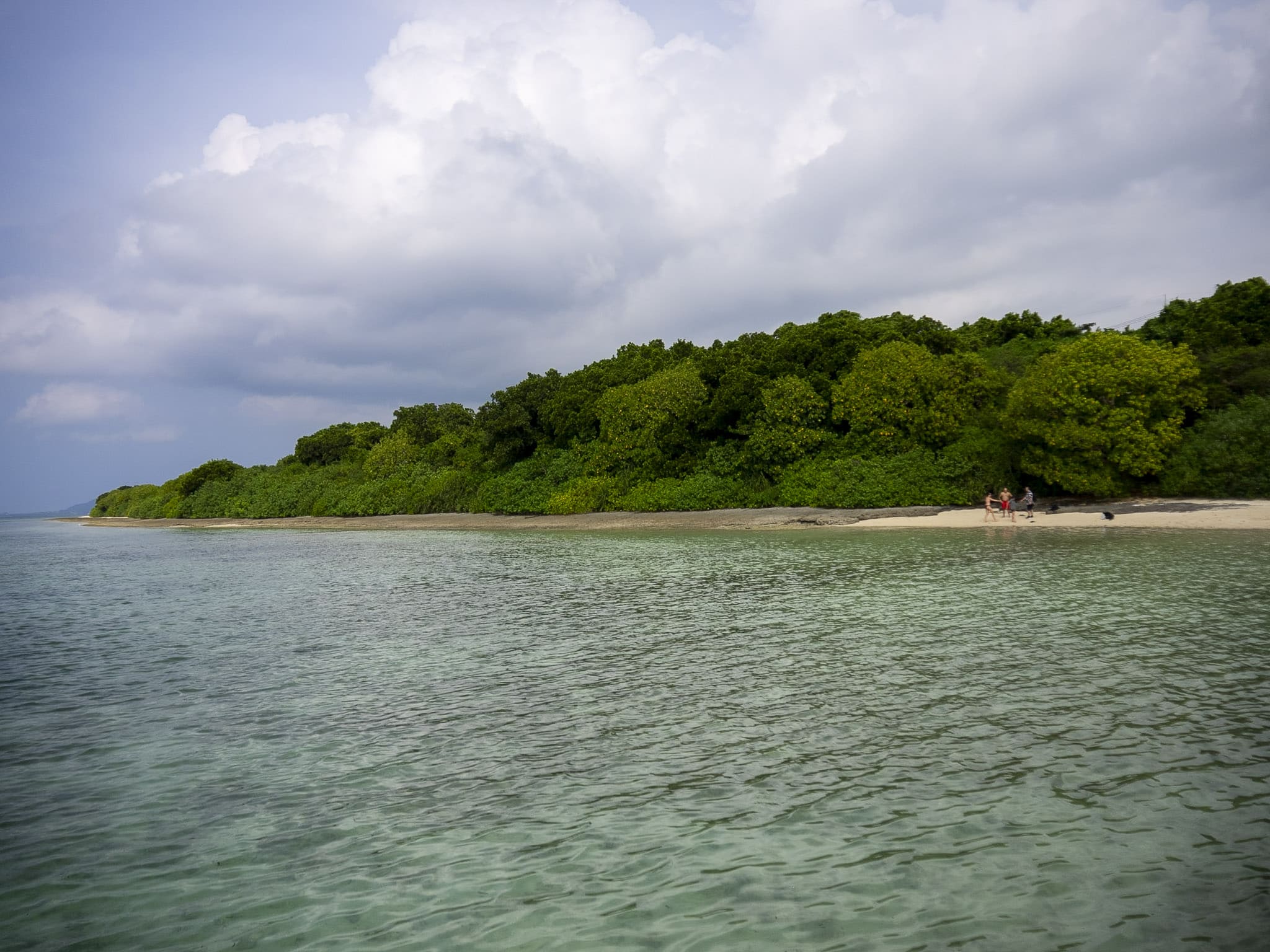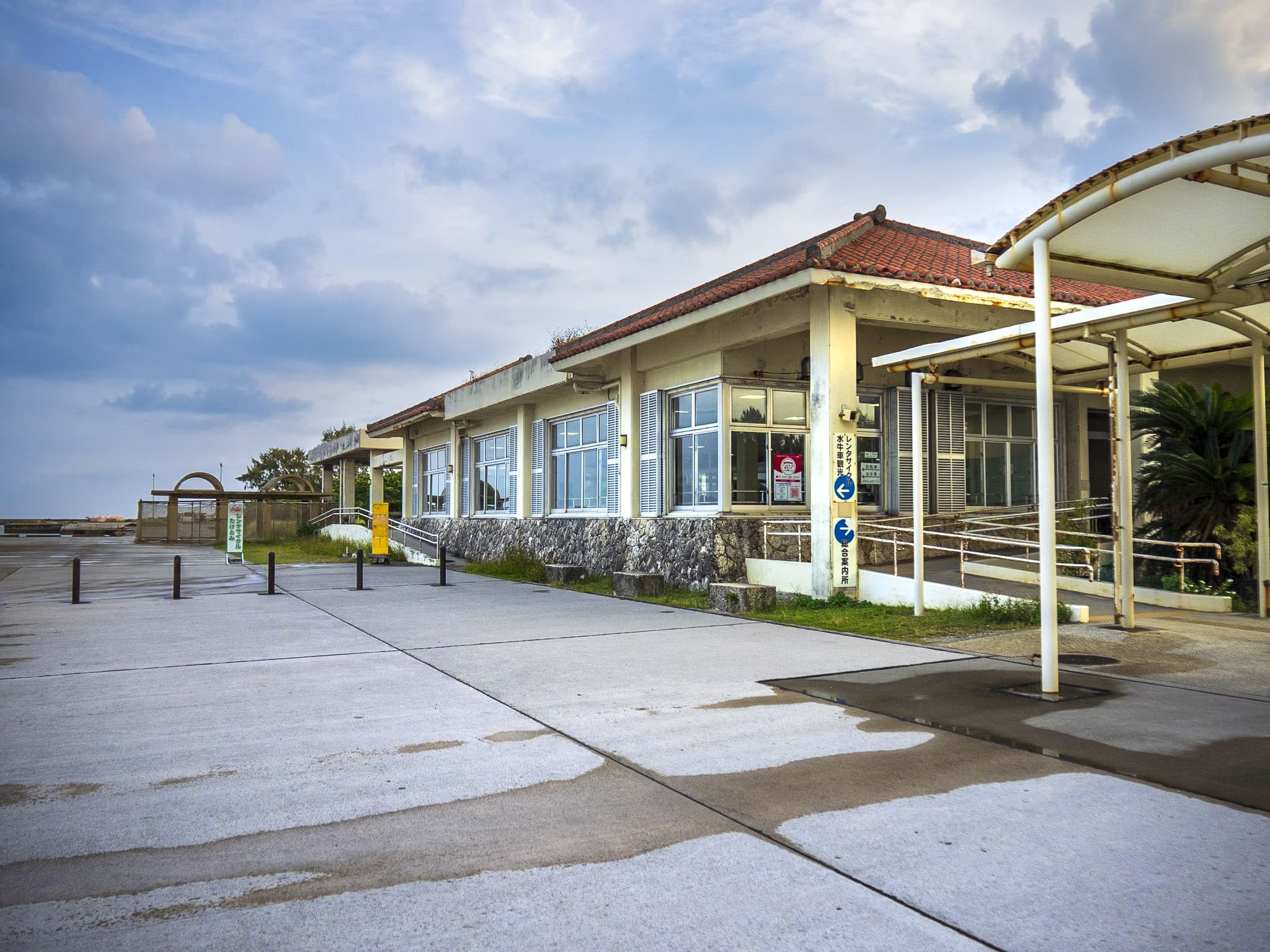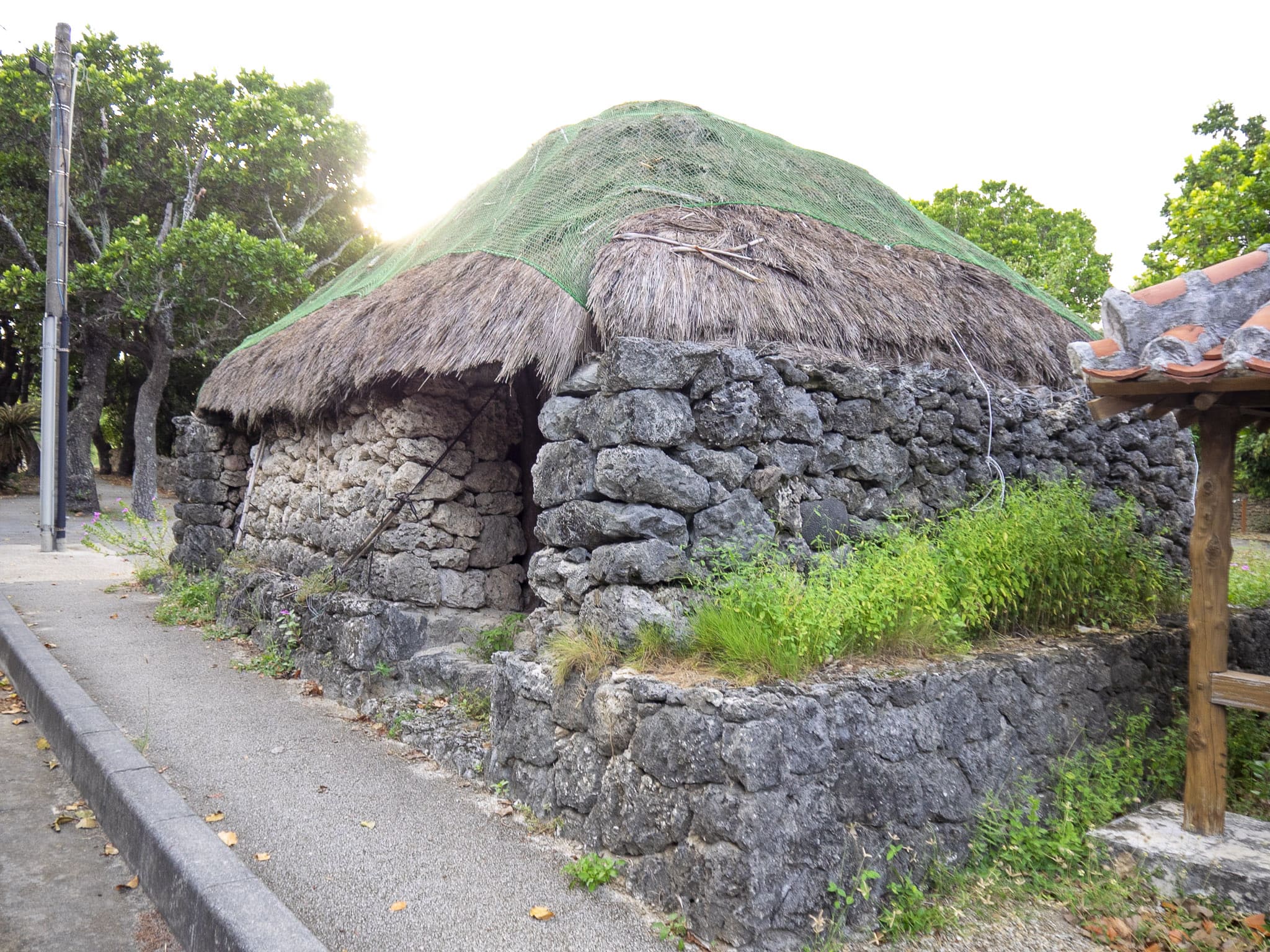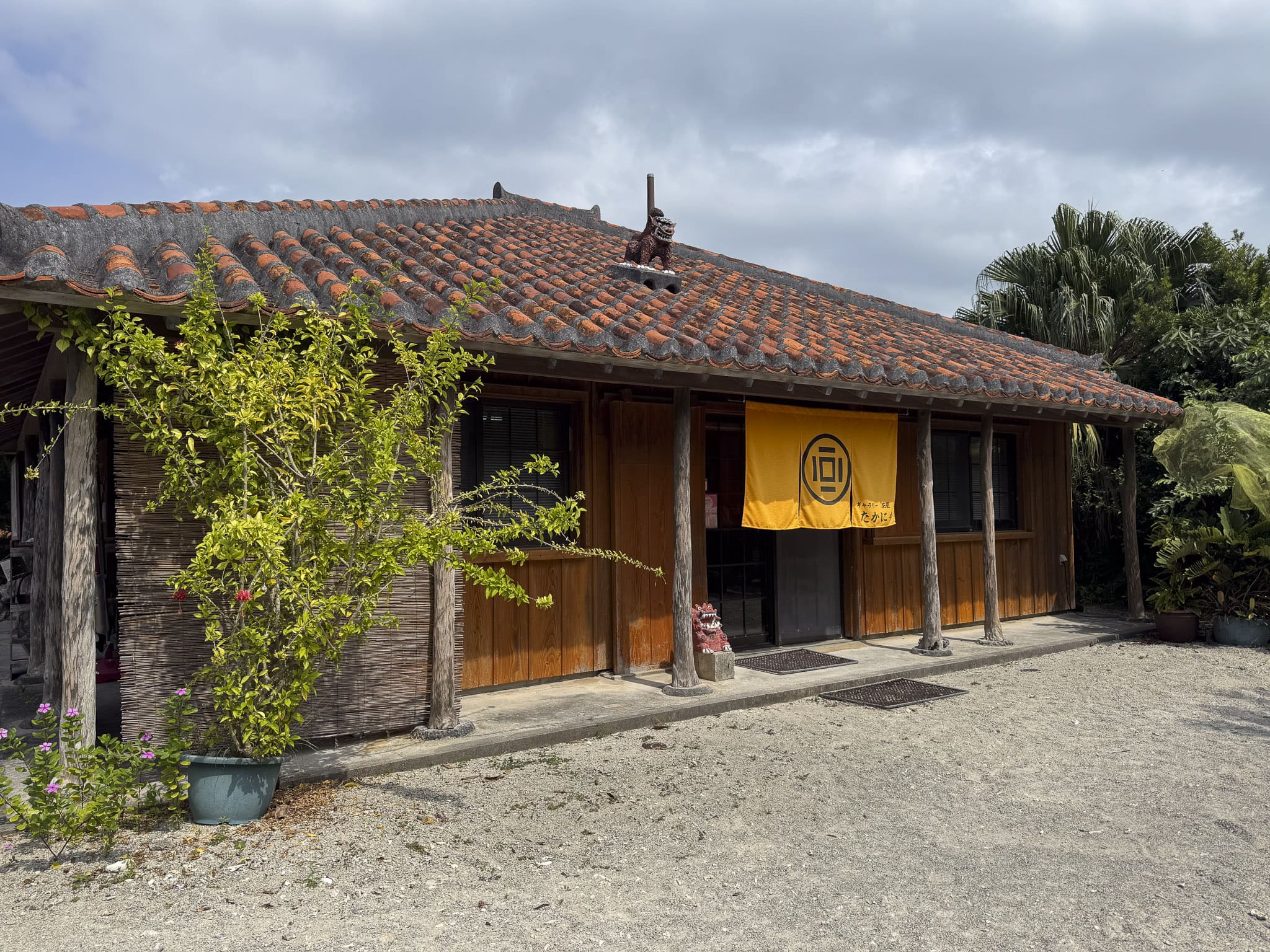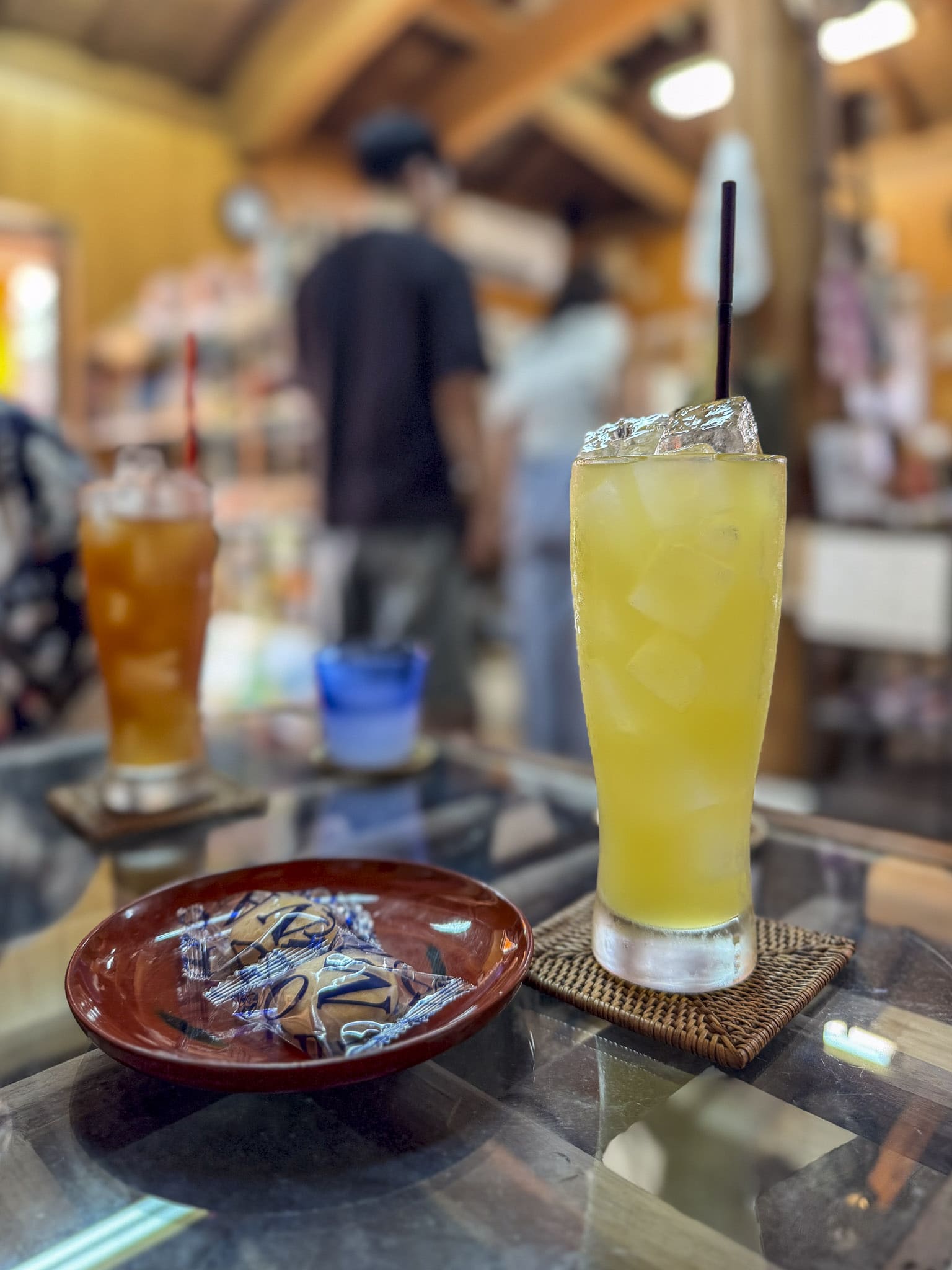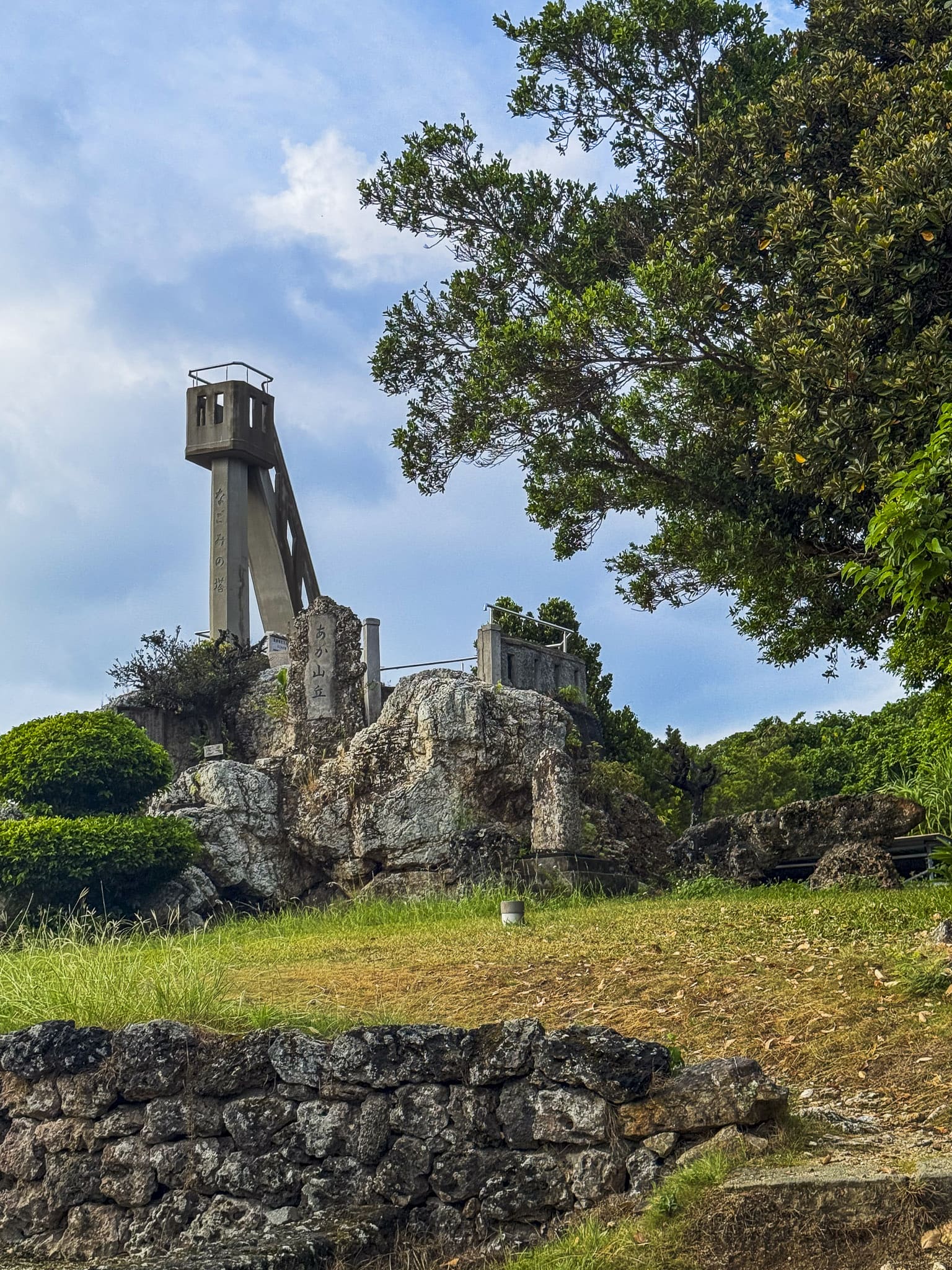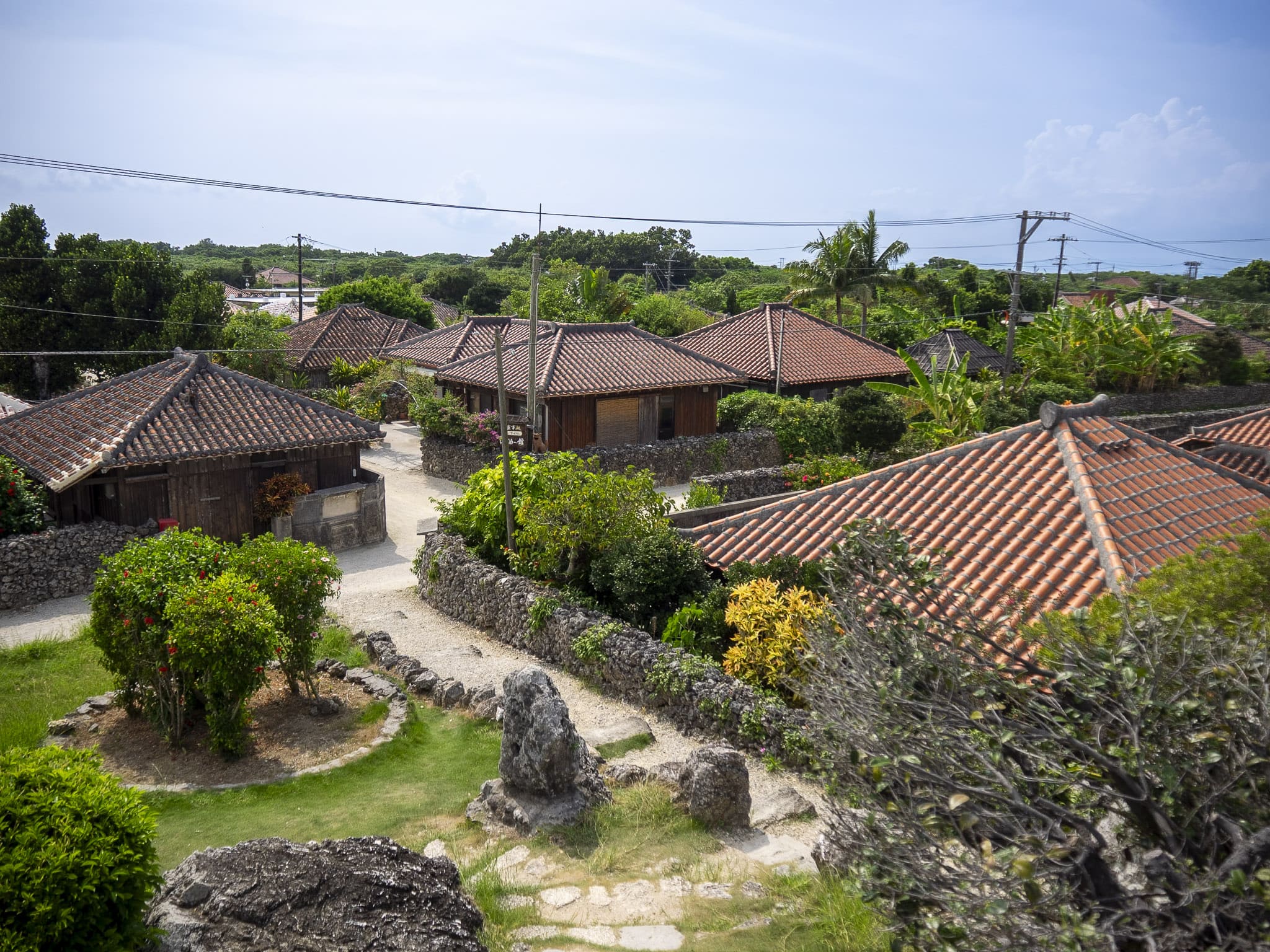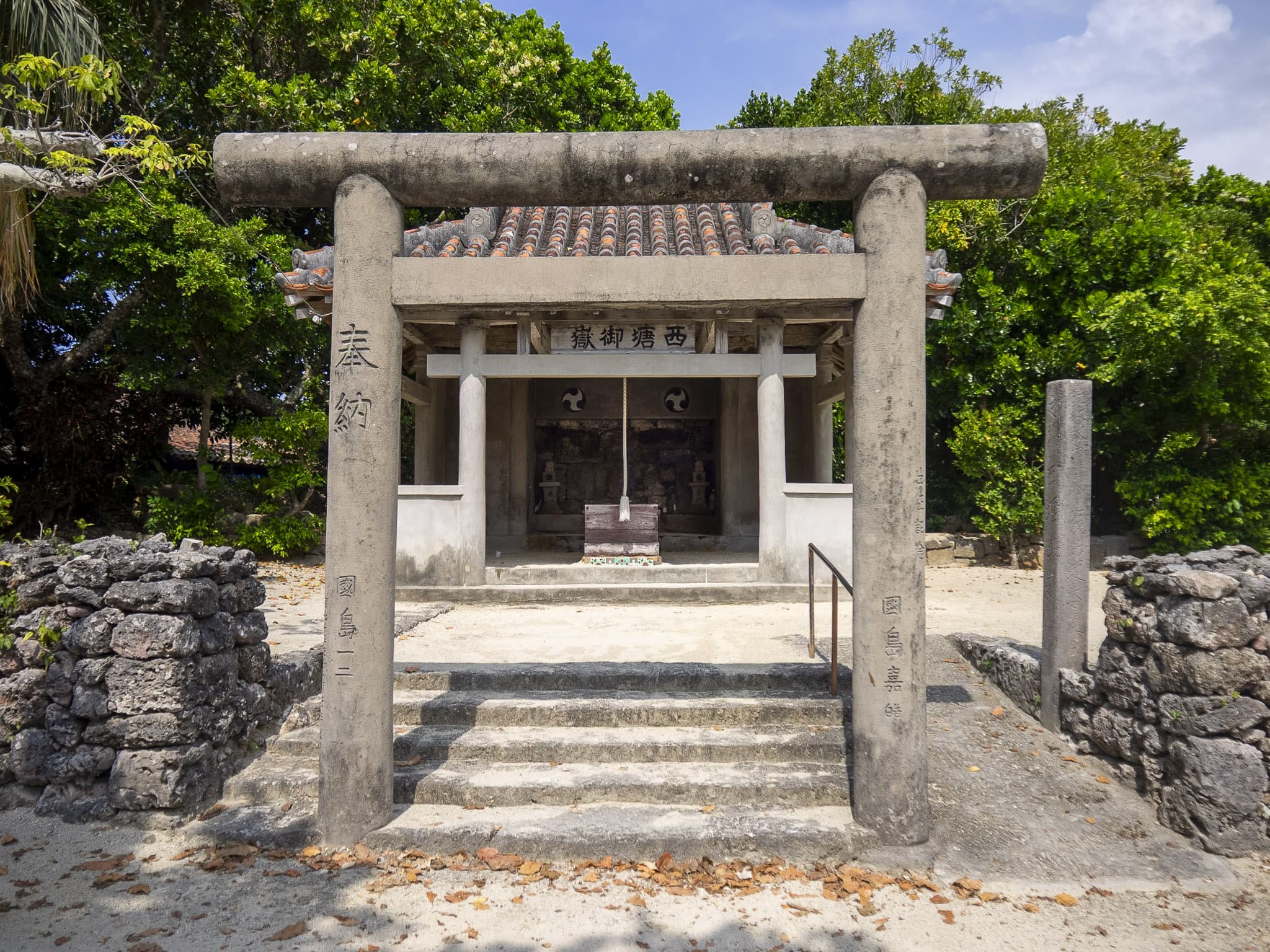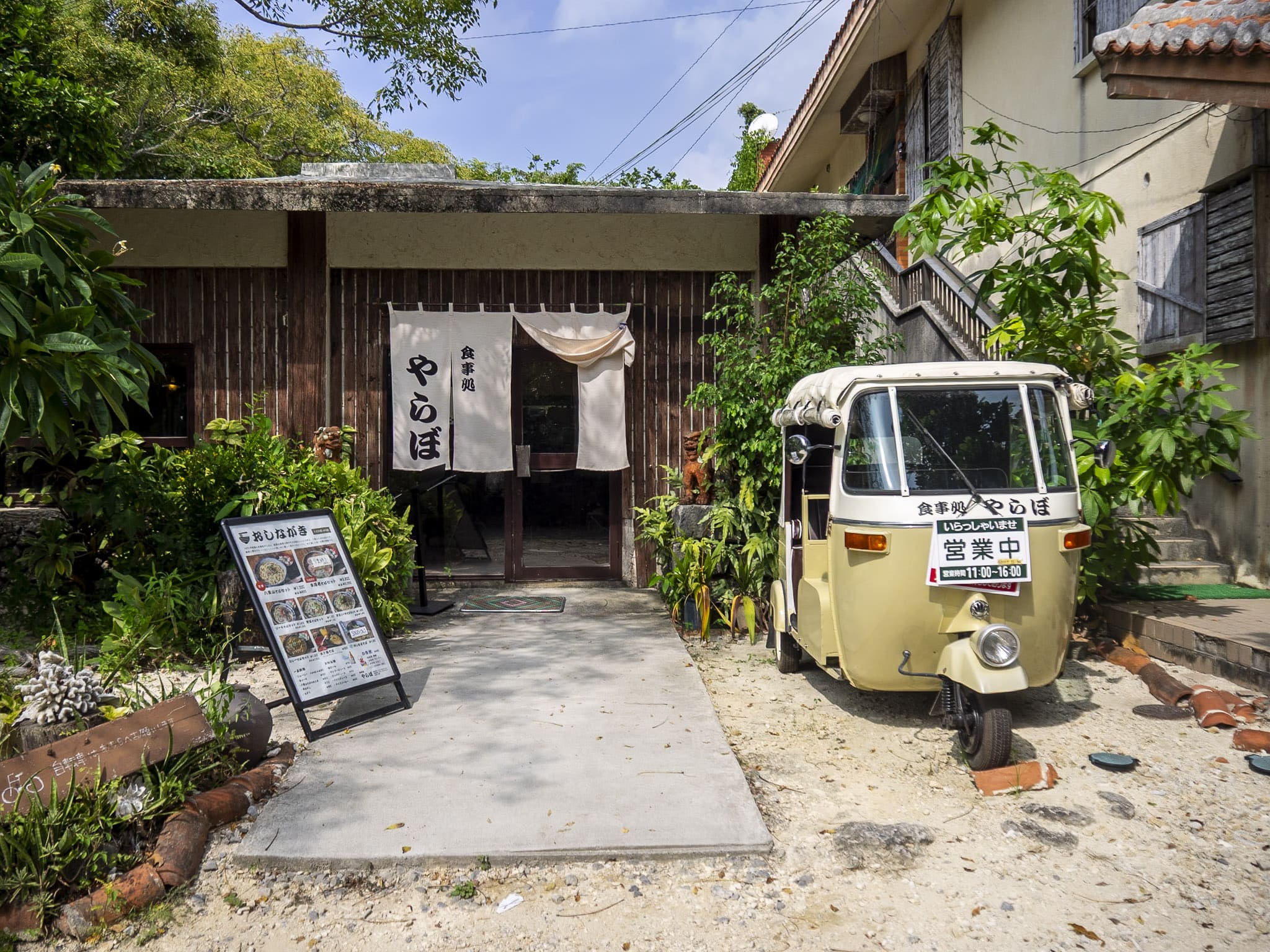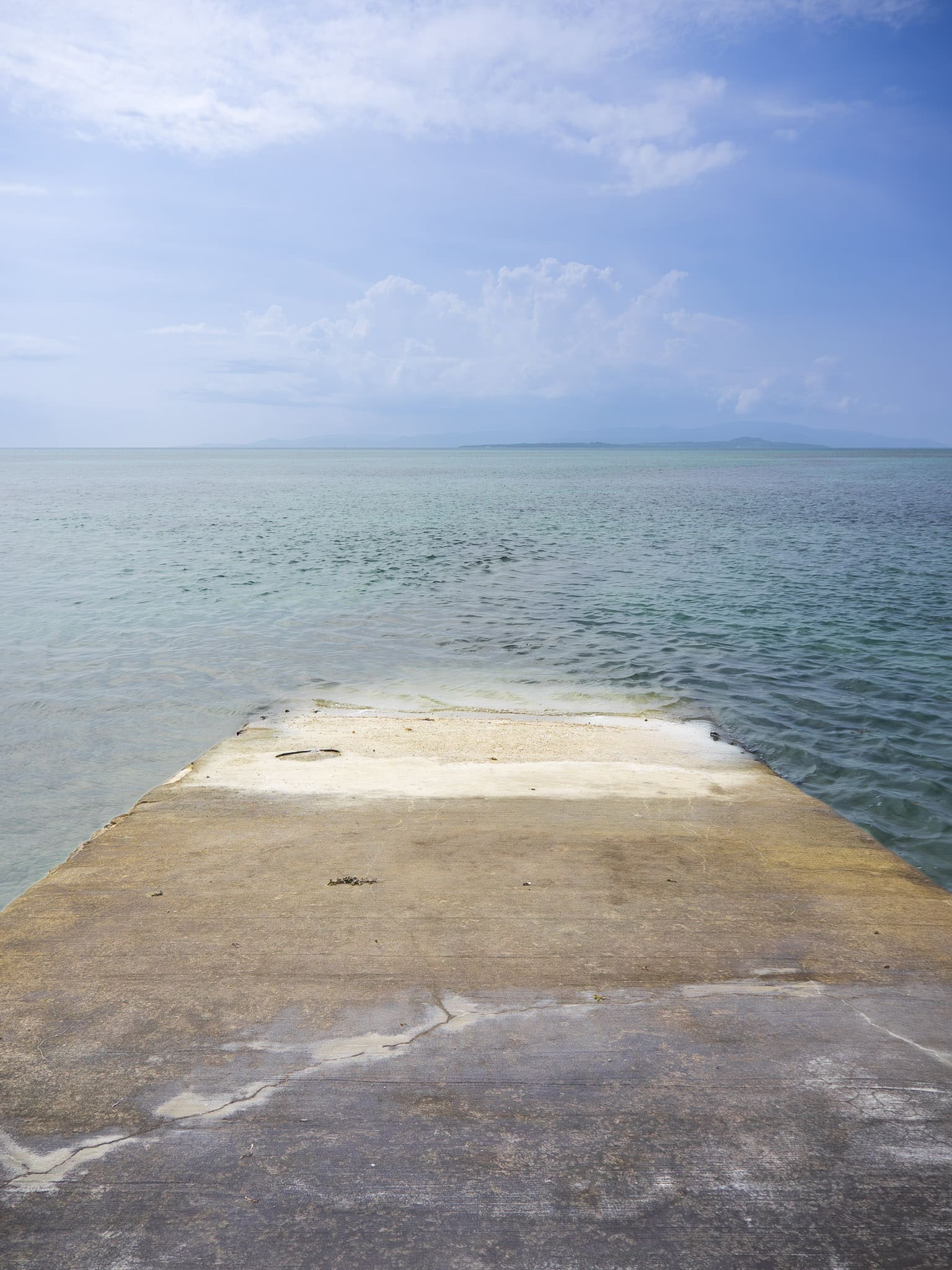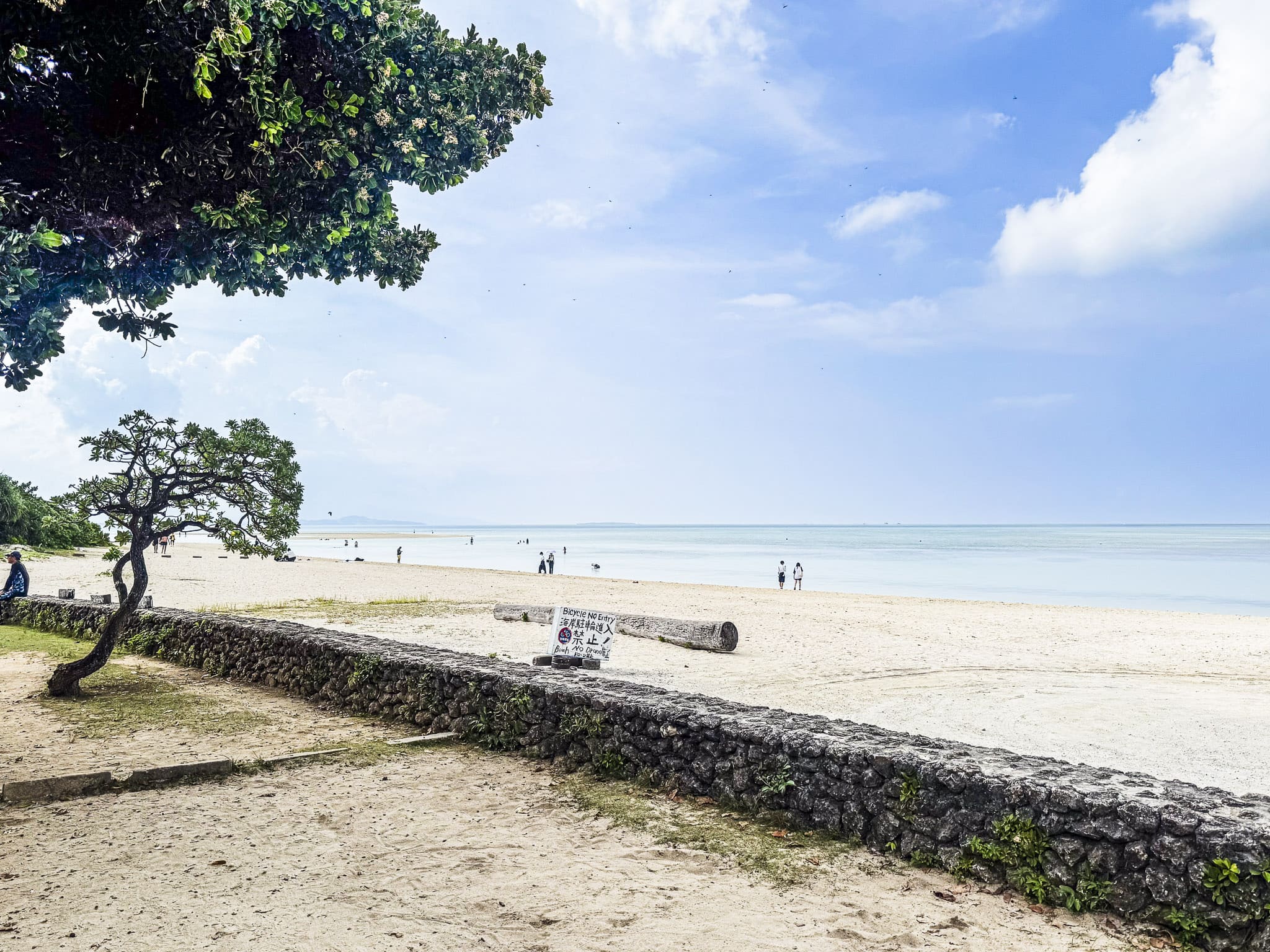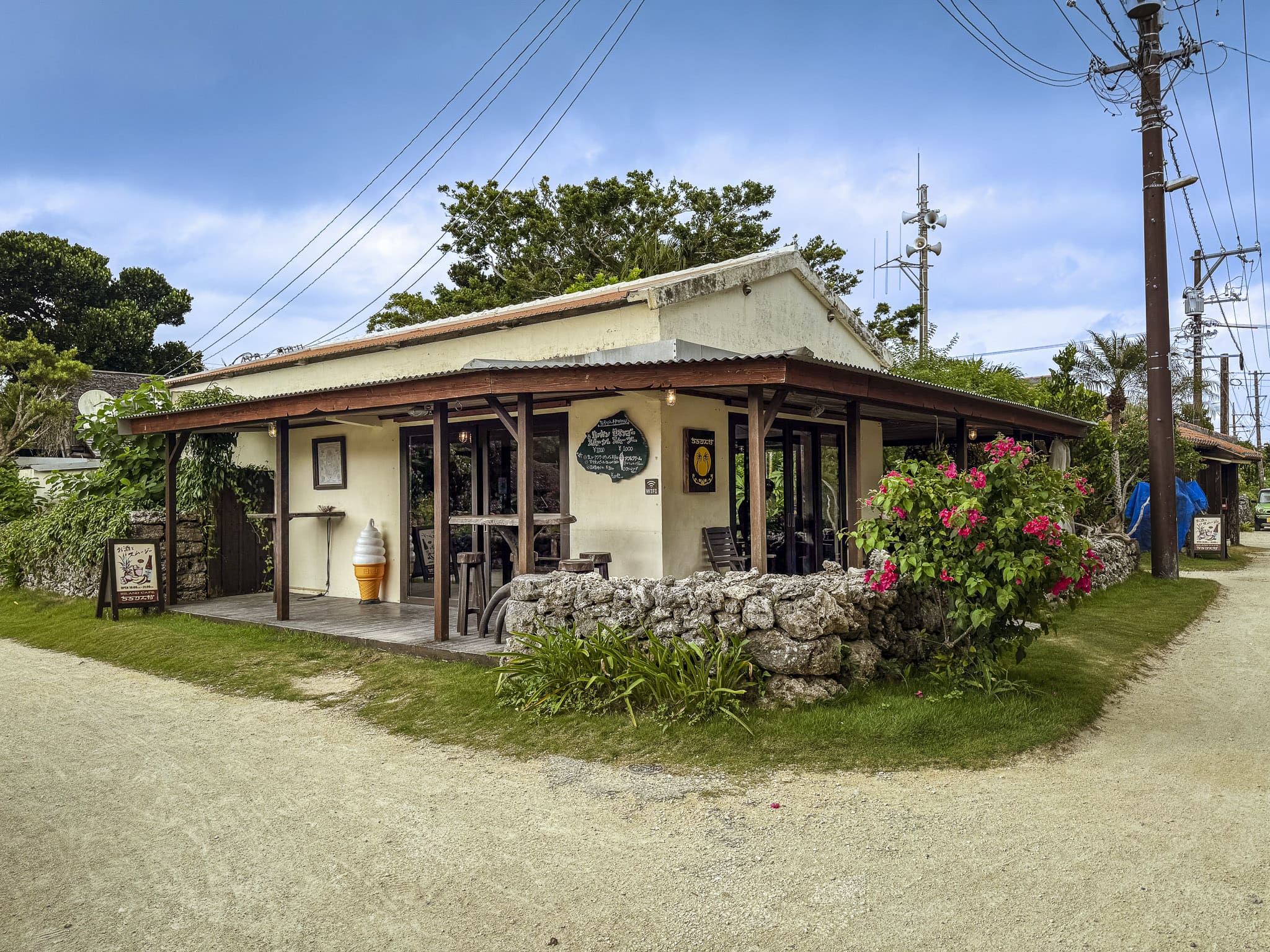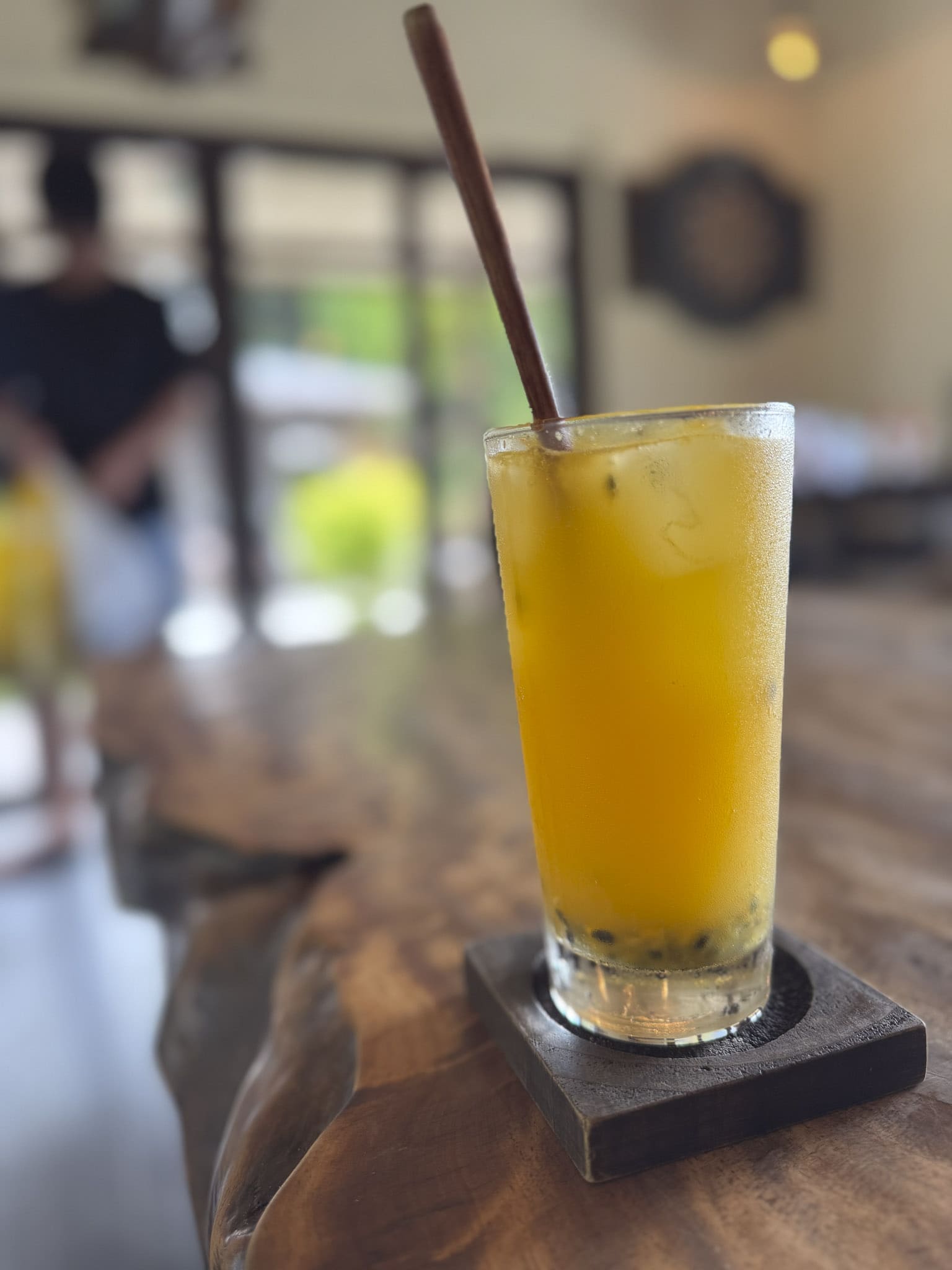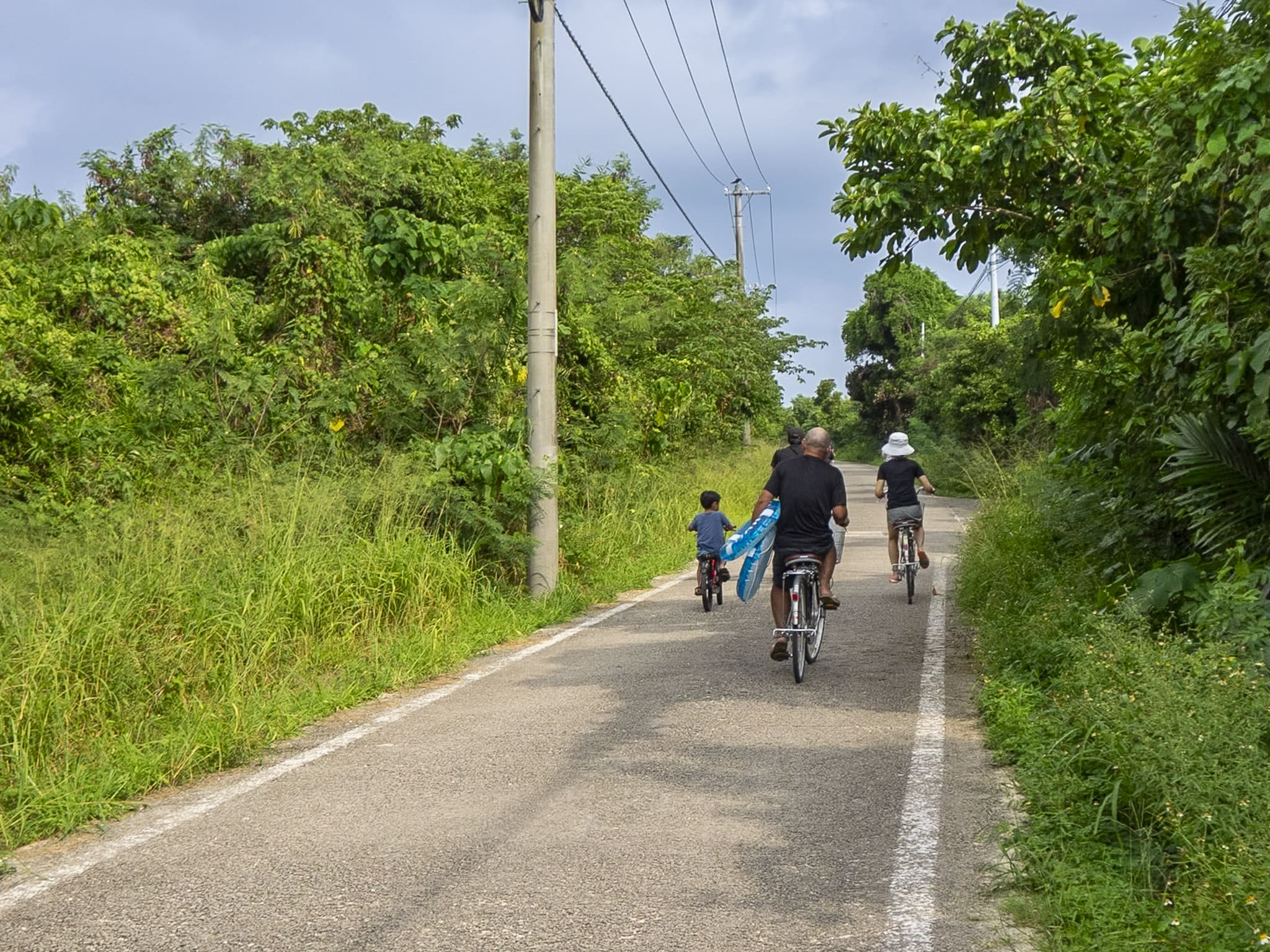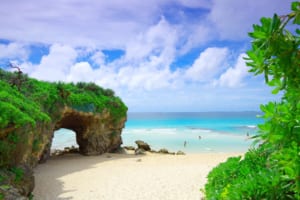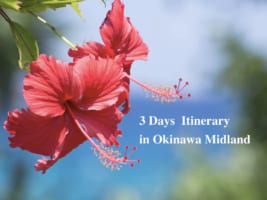1-Day Trip to Taketomi Island from Ishigaki
Cycle, Stroll, and Relax: A Guide to Taketomi Island’s Peaceful Charms
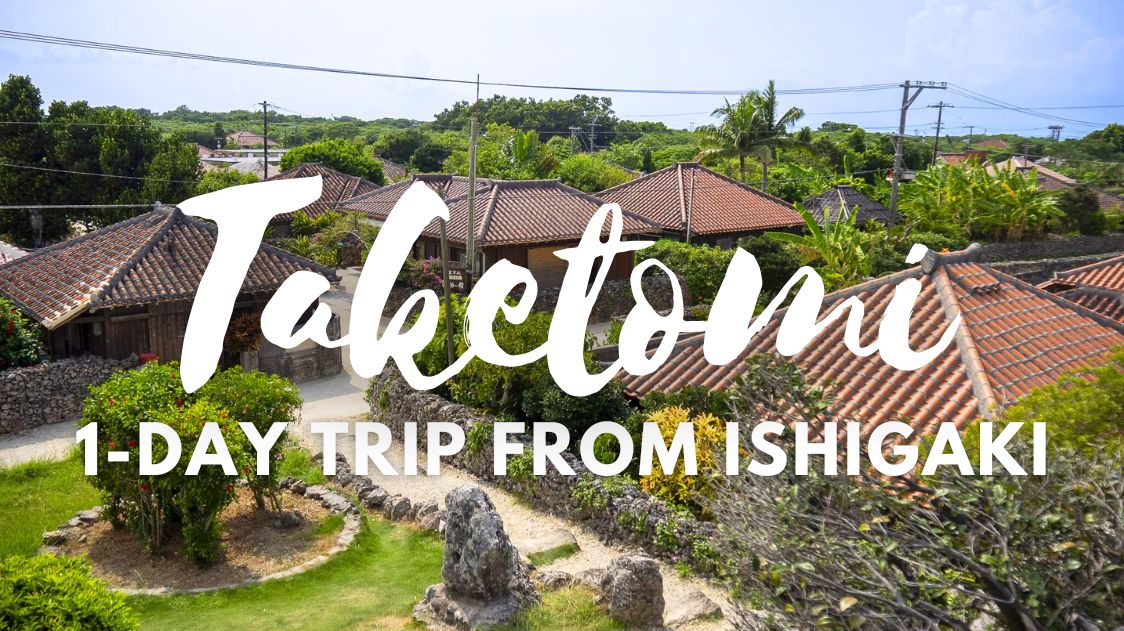
The ferry to Taketomi barely has time to settle into open water before the coast of Ishigaki fades into a blue haze. Ten, maybe fifteen minutes, are just enough to feel the shift. The engine hum softens, the air thickens with salt and sun, and suddenly you’re approaching an island that looks like it slipped out of another century.
We arrived on the 12:20 boat from Ishigaki with Anei Kanko, a short ride that felt longer only because of how different the destination seemed. From the dock, the island shimmered in quiet: coral walls, tiled roofs, and the lazy rattle of a rental bike somewhere down a sandy lane. We knew we’d be back on the 17:50 ferry to Ishigaki later that day, but for the next few hours, time belonged entirely to Taketomi: its open skies, its faint scent of hibiscus, and the sense that life here has learned the art of staying still.
Time may be slower, but rest assured that 5 hours is enough to cover all the things to do in Taketomi Island in one day, like Nagomi Tower or Nishi Pier, thanks to the main village’s compact layout. The following itinerary even allows you to stop comfortably for a meal to try local specialties like Yaeyama soba. Fortunately, ferries from Ishigaki Island only take about 15 minutes each way (keep reading for access details!), so you don’t have to be an early bird while on holiday to enjoy a fulfilling day trip to Taketomi.
A Brief History of Taketomi
Taketomi Island, or Taketomijima (竹富島), is a small Yaeyama island with a long human presence and a history shaped by both nature and outside rule. Archaeological and local records show continuous settlement for centuries before Taketomi became integrated into the Ryukyu Kingdom’s island administration; life here was long organized around fishing and sea transport between the islands. In 1609, the Satsuma domain from Kagoshima invaded the Ryukyu Kingdom, a turning point that imposed heavy obligations on Yaeyama islanders and forced many Taketomi farmers into dangerous, long canoe passages to cultivate fields on neighboring islands since Taketomi’s soil was not suitable for rice. An era of hardship that left deep marks on the island’s social memory.
Modern pressures in the 20th century, which included economic change to tourism, prompted strong local action to protect Taketomi’s landscape and community. The result was the Taketomijima Kensho (Taketomi Island Charter), adopted in 1986 and revised in 2017, which codifies the islanders’ preservation commitments. Its five undertakings reflect a community-minded strategy to keep white-sand lanes, limestone walls, red-tiled roofs, beaches, forests, and sacred sites intact for future generations:
- Do not sell: Prohibits selling or lending land or houses to outsiders in a disorderly manner.
- Do not pollute: Ensures the protection of the island’s sea, beaches, and villages from pollution.
- Do not disturb: Maintains the aesthetic appearance of villages and roads, free from advertisements or disturbances.
- Do not destroy: Protects the unique rural community landscape and natural environment from destruction.
- Make full use: Encourages the use of traditional ceremonies, folk performing arts, and local industries to support residents and promote the island.
Taketomi today is tiny in scale (about 9.2 km around, with under 400 residents) and deliberately managed: visitors are welcomed, but expected to follow the island’s simple rules (take rubbish home, respect private yards and utaki, avoid camping or sleeping outside, etc.) so that tourism does not erode the culture and environment the Kenshō exists to protect. In short, just keep it civil, observe without disturbing the local flora and fauna, and respect sacred sites known as “on”.
Getting from Ishigaki to Taketomi Island
We arrived at Euglena Ishigaki Port Remote Island Terminal (ユーグレナ石垣港離島ターミナル) a little before noon, the city behind me already humming with the lunchtime bustle of Ishigaki. The terminal serves as the gateway to the outer islands of the Yaeyama chain. For those who may arrive on a private car, there is ample parkig space right at the port. Cars are not allowed aboard ferries.
Inside the building, there were counters for several ferry companies, snack shops, souvenir stalls, and lockers to send off extra baggage. Two main operators connect Ishigaki and Taketomi in just 15 minutes: Anei Kanko and Yaeyama Kanko Ferry, with boats running every 30 minutes or so during the day. Tickets can be bought on the spot, but if you’re following a fixed schedule, a round-trip purchase saves a little time. You can also choose to go with one operator and return with the other depending on the schedule convenience, which is exactly what I did. I bought a one-way ticket with Anei Kanko for the 12:20 departure to Taketomi Island and then bought my return ticket with Yaeyama Sightseeing Ferry at 17:50.
When I visited, fares were the same regardless of the company. As of October 2025, one-way tickets between Ishigaki and Taketomi with Anei Kanko or Yaeyama Kanko Ferry were 850 yen for adults. Bear in mind that timetables and fares may change with the season, so it’s best to check in advance on their corresponding official websites. If you know what your schedule will be like in advance or prefer not to worry about purchasing the tickets on site, you can get the tickets online as well:
- Anei Kanko: Timetables & Online Reservation.
- Yaeyama Kanko Ferry: Timetables & Online Reservation.
1-Day Taketomi Island Itinerary
As the ferry pulled away, Ishigaki’s shoreline gradually softened into the distance, and the water opened into a stretch of bright blue. The seating area rocked gently; voices hushed as the open sea sounded louder. In that moment, I realized how quickly the pace shifts. By the time the dock at Taketomi came into view, I felt the island’s character: slower, quieter, historic, before even setting foot on the coral-fenced roads. Riding the short ferry is less about transit and more about crossing into a different tempo of life.
[Note: Mentioned times are orientative, following my day around the island. Cycling is a popular choice in Taketomi, but I chose to walk, so your schedule may vary depending on what you decide to do.]
12:40 PM – Taketomi Yugafu-kan and Funaya Ruins, a First Step on the Island
After stepping off the ferry, your first stop is Taketomi Yugafu-kan (竹富島ゆがふ館), the island’s visitor center just a short walk from the port. The name Yugafu means “a world blessed with abundance,” and the space tries to live up to it with a small souvenir shop and local tourist information. You can also pay a small local fee of 300 yen to dispose of cans or PET bottles at the premises for the day.
Just beside it lies the Funaya Ruins (フナヤー跡), the remains of a small thatched hut where islanders once waited for boats. The structure is simple, but it speaks of a time when travel here meant patience and tides, not timetables.
12:55 PM – A Break at Chaya Takanya
It was just a few minutes walk towards the center of the village from the port. Still, with the midday heat in full swing, we quickly ducked into Chaya Takanya (茶屋たかにゃ), a small café & gallery (run alongside the nearby historical Takana Ryokan), for a chilled drink and a quick look at the souvenirs. The place occupies an old red-tiled house and doubles as a gallery selling handmade crafts, island spices (ぴーやし), and original T-shirts. This is a popular little stop for cake sets, tropical juices (mango, shikuwasa) and light snacks, a cozy, homey spot to pause on the village loop.
 Access Access |
15-min walk from Taketomi Island Ferry Terminal |
|---|---|
 Business Hours Business Hours |
11 AM–5 PM |
 Official Website Official Website |
http://www.kit.hi-ho.ne.jp/hayasaka-my/new_page_1.htm |
1:20 PM – Former Yonakoku Residence, a Small Architectural Heritage Museum
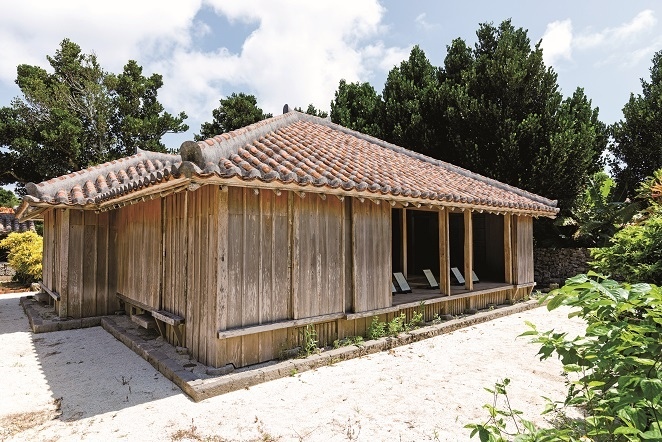
We made a small detour to see the Former Yonakoku Residence (旧与那国家住宅), only to find it closed without any notice. A little disappointing, but still worth mentioning, as this thatched-roof house is one of the few remaining examples of traditional Okinawan architecture in this area. Built in the early 20th century, it belonged to the Yonakoku family, who were once prominent in the local community. If it’s open on your visit, make sure not to miss it.
 Access Access |
20-min walk from Taketomi Island Ferry Terminal |
|---|---|
 Business Hours Business Hours |
9 AM–5 PM |
 Official Website Official Website |
https://taketomijima.okinawa/wp/maiyununnya/ |
1:40 PM – Nagomi Tower, the Highest Lookout Point in the Island
Well, just my luck. Turns out Nagomi Tower (なごみの塔) is also closed to the public until further notice due to repair works, so the panoramic views over Taketomi I was hoping for will have to wait. Despite my poor timing, from the base of the stairs, the view was still reasonably good. Its position on top of a small hill gives one of the clearest frames of the village layout, so even if I could not see from atop the 4.5-meter platform, it was nice enough to take a look around.
A small fun fact about these characteristic red tile roofs: these are not as traditional as one might think at first sight. Turns out, the Ryukyu Kingdom didn’t allow commoners to use these tiles, restricted only to the nobility or sacred sites, a prohibition that was maintained until Okinawa was incorporated to Japan after the kingdom was abolished. The first red tile-roofed house would not appear in Taketomi until 1905, but it would still remain far from common during the coming decades and would only spread around the island around the time of the conservation movement.
 Access Access |
17-min walk from Taketomi Island Ferry Terminal |
|---|
1:45 PM – Nishito Utaki, the Site of a Former Administrator Turned Guardian Deity
Wandering around a quieter lane, we found ourselves at Nishito Utaki (西塘御嶽), a sacred grove where local islanders have honored the legacy of Nishito, a 16th-century Ryukyu administrator, ever since. I stepped lightly past low coral walls and thick fronds, entering a space that felt hushed, like a breath held by the island.
The place is modest, just stone markers, a small wooden shrine, and groves of native trees, but its significance is weighty. Nishito helped guide this region under the Ryukyu Kingdom, and this site preserves the cultural memory of island governance, spirituality, and everyday life intertwined.
 Access Access |
16-min walk from Taketomi Island Ferry Terminal |
|---|---|
 Official Website Official Website |
https://taketomi-shimajikan.okinawa/topics/3171 |
2:00 PM – Lunch Break at Yarabo
By the time we reached Yarabo (食事処やらぼ), the midday sun had turned Taketomi’s lanes into a shimmer of coral dust and heat. The restaurant sits quietly along one of the main paths, surrounded by hibiscus and shaded by tiled eaves. We hadn’t had a proper lunch yet, so we decided to stop here.
I settled in for a bowl of Yaeyama soba, the island’s signature dish. The broth was light yet deeply flavored, with slices of pork and spring onions that carried a subtle sweetness. It wasn’t fancy, just honest island comfort food, the kind that tastes even better after walking under the sun all morning.
 Access Access |
20-min walk from Taketomi Island Ferry Terminal |
|---|---|
 Business Hours Business Hours |
11 AM–4 PM |
 Official Website Official Website |
https://maruhachi-food.com/shop/%E9%A3%9F%E4%BA%8B%E5%87%A6-%E3%82%84%E3%82%89%E3%81%BC/ |
2:45 PM – Nishi Pier, a Paradisiac Spot with a Sorrowful Past
After lunch, we kept walking all the way to the western coast, and we wound up in Nishi Pier (西桟橋). The calm, turquoise water gave no hint of the hardship this place witnessed. Built as a simple dock, it became the starting point for generations of Taketomi farmers who, from the early 1600s, were forced under the brutal nintozei poll tax imposed by the Satsuma Domain after invading the island. Because rice barely grew on the island, villagers set off in hollowed‑log canoes, paddling to fields on Ishigaki and Iriomote, singing work songs (yunta) and ritual songs (ayo) to carry them through the grueling labor.
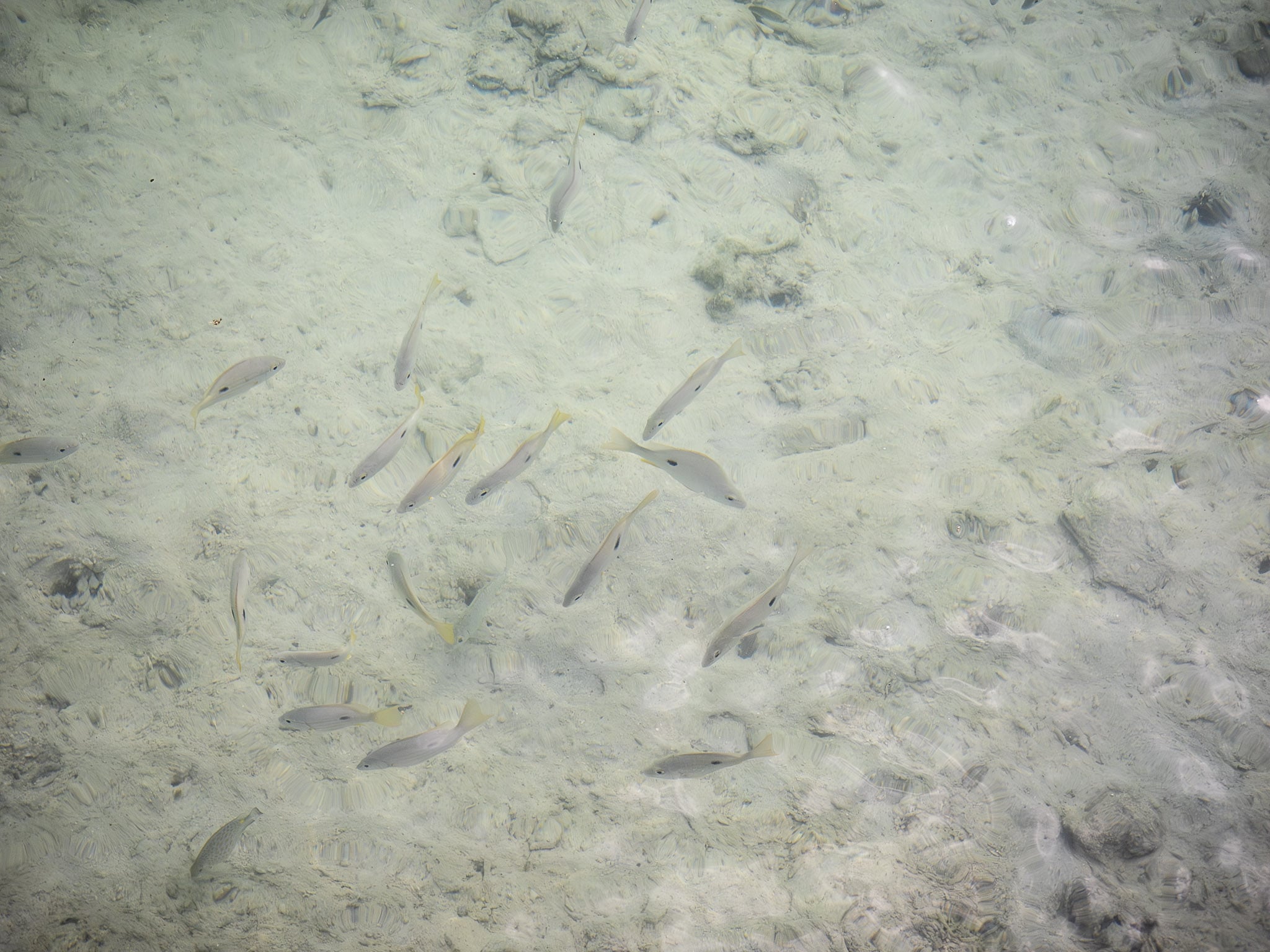
That era lasted until 1902, and though the pier today looks peaceful, a plaque on site keeps alive the memory. In 2005, it was recognized as a Registered Tangible Cultural Property of Japan, preserving both its history and structure. Now, Nishi Pier offers simple pleasures: hermit crabs digging in the sand, pristine waters that allow a clear view of marine life to the naked eye.
 Access Access |
25-min walk from Taketomi Island Ferry Terminal |
|---|---|
 Official Website Official Website |
https://painusima.com/899/ |
3:10 PM – Kondoi Beach, an Endless Horizon
From Nishi Pier, we decided to continue walking south along the sand and rocks to keep glancing at the beautiful sea, until we arrived at Kondoi Beach (コンドイ浜), one of Taketomi Island’s most renowned beaches. The beach features a gentle curve of white sand, bordered by crystal-clear waters that gradually deepen, making it ideal for wading and swimming. The surrounding area is relatively undeveloped, preserving the island’s traditional charm. A sign on the premises warns visitors not to enter with bicycles, so they have to leave them at the designated bicycle parking spot.
 Access Access |
32-min walk from Taketomi Island Ferry Terminal |
|---|
3:45 PM – Chirorinmura, a Chill Spot Open Until Late
On our way back from the beach, it was time for another refreshment, so we stopped by Chirorinmura (ちろりん村), a cozy café and bar tucked in Taketomi’s central Nakasuji village. The space occupies a beautifully renovated traditional red-tiled Ryukyu house, balancing the authentic architecture with a relaxed, modern vibe.
During the day, they serve tropical fruit smoothies, soft ice cream, and light meals, while at night the café transforms into a bar with cocktails that capture the flavors of the islands. I was surprised to see the sign outside with their business hours lasting until midnight, probably the only bar that stays open until late.
Before long, it was time to start making our way back to the ferry terminal.
 Access Access |
32-min walk from Taketomi Island Ferry Terminal |
|---|---|
 Official Website Official Website |
http://taketomichirorin.jp/ |
Cycling, a Convenient Way to Move Around Taketomi
Although we chose to remain on foot while exploring around the island, Taketomi’s compact size and flat terrain make it ideal for exploring by bicycle. Several rental shops are located near the ferry terminal and within the village, easily located with a simple search in Google Maps, offering both standard and electric bikes by the hour or for a full day. With a circumference of only about nine kilometers, most attractions are easily reachable at a leisurely pace. Cycling lets visitors enjoy the island’s quiet rhythm, stop at scenic spots freely, and experience the landscape much as the locals do, so I encourage you to do the same.
Taketomi Island quietly preserves the soul of the Yaeyama Islands. Whether you wander its white sand lanes, relax at a café like Chirorinmura, or circle the coast by bicycle, each moment reflects the islanders’ deep appreciation for nature and tradition. Visitors are welcome to share in that spirit, gently and with gratitude, ensuring Taketomi’s slow rhythm remains unchanged for generations to come.
For more information about Okinawa, check these articles too!
Written by
Photographer, journalist, and avid urban cyclist, making sense of Japan since 2017. I was born in Caracas and lived for 14 years in Barcelona before moving to Tokyo. Currently working towards my goal of visiting every prefecture in Japan, I hope to share with readers the everlasting joy of discovery and the neverending urge to keep exploring.





